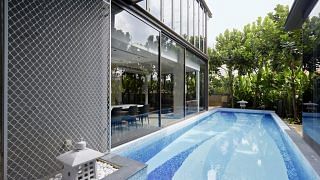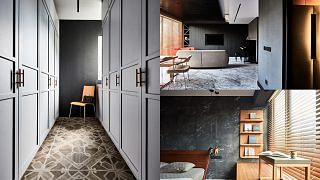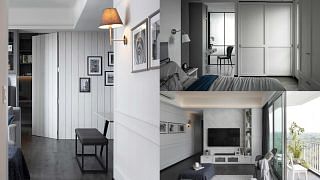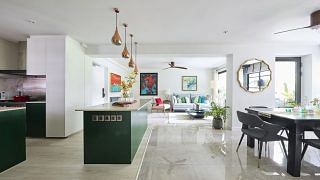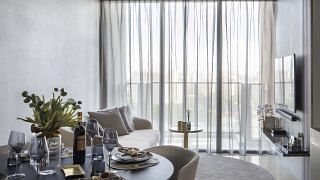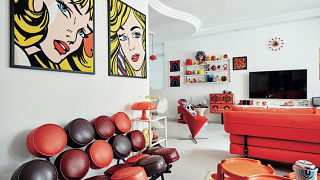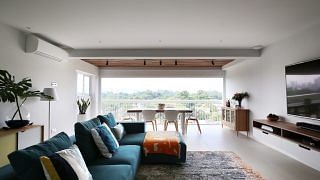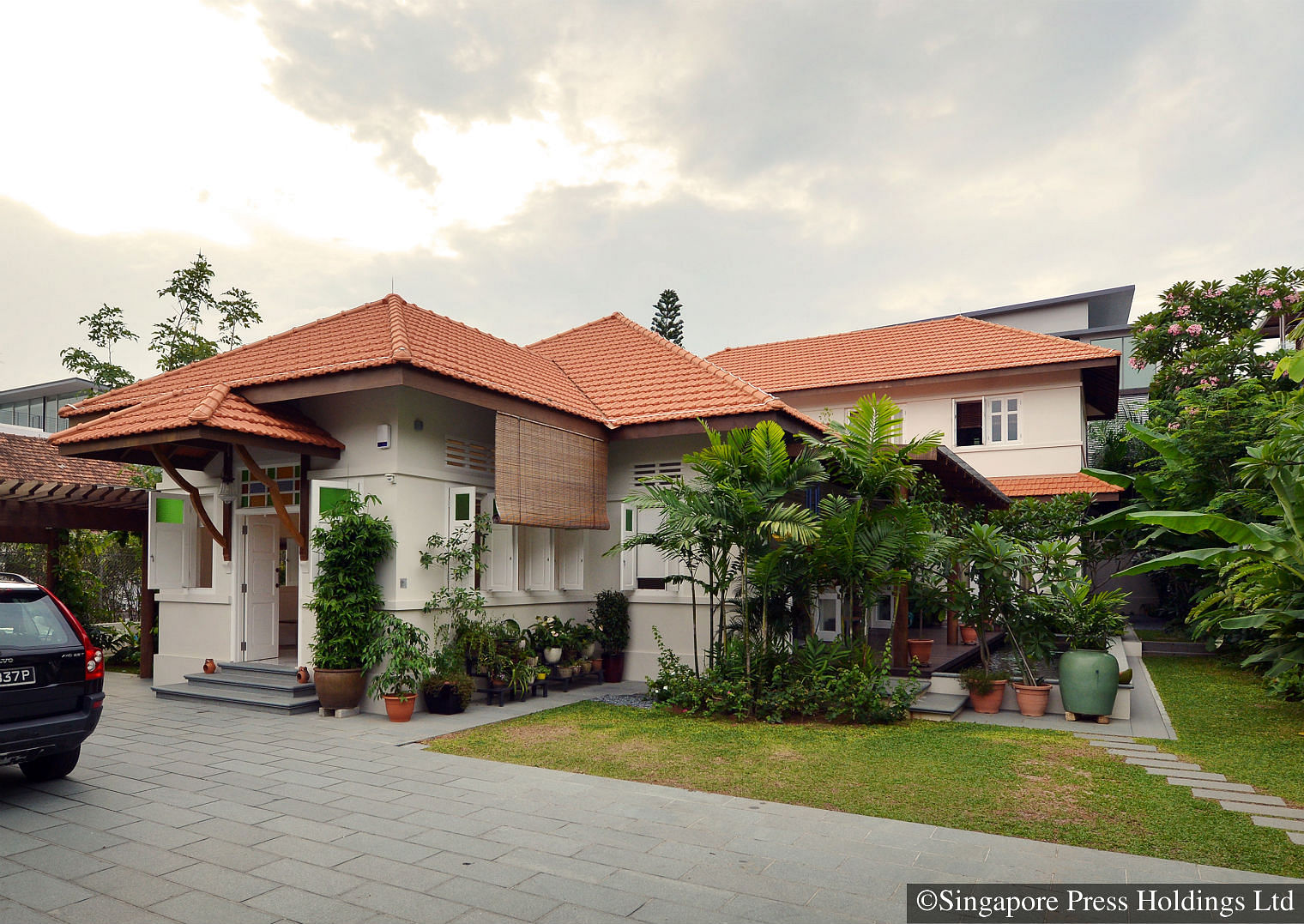
Ms Grace Ban's bungalow in the Mountbatten estate.
The Mountbatten estate might be one of Singapore’s oldest neighbourhoods, but the renovated modern bungalows and apartments mask its early beginnings.
It could have been the obvious, and cheaper, route for Ms Grace Ban, 57, to take – raze her old house and rebuild two new homes on her 9,000 sq ft plot of land, like what many of her neighbours have done.
But the managing director of Estee Lauder Cosmetics chose to retain her colonial home, which she moved into after marrying in 1988. Ms Ban, who was widowed in 2010, says: “Even though the house is not subject to conservation, it prompted me to keep its spirit because it’s historically rich.
“I did weigh the option of starting from scratch to have new buildings… anyone can build two homes, but no one has a house like this.”
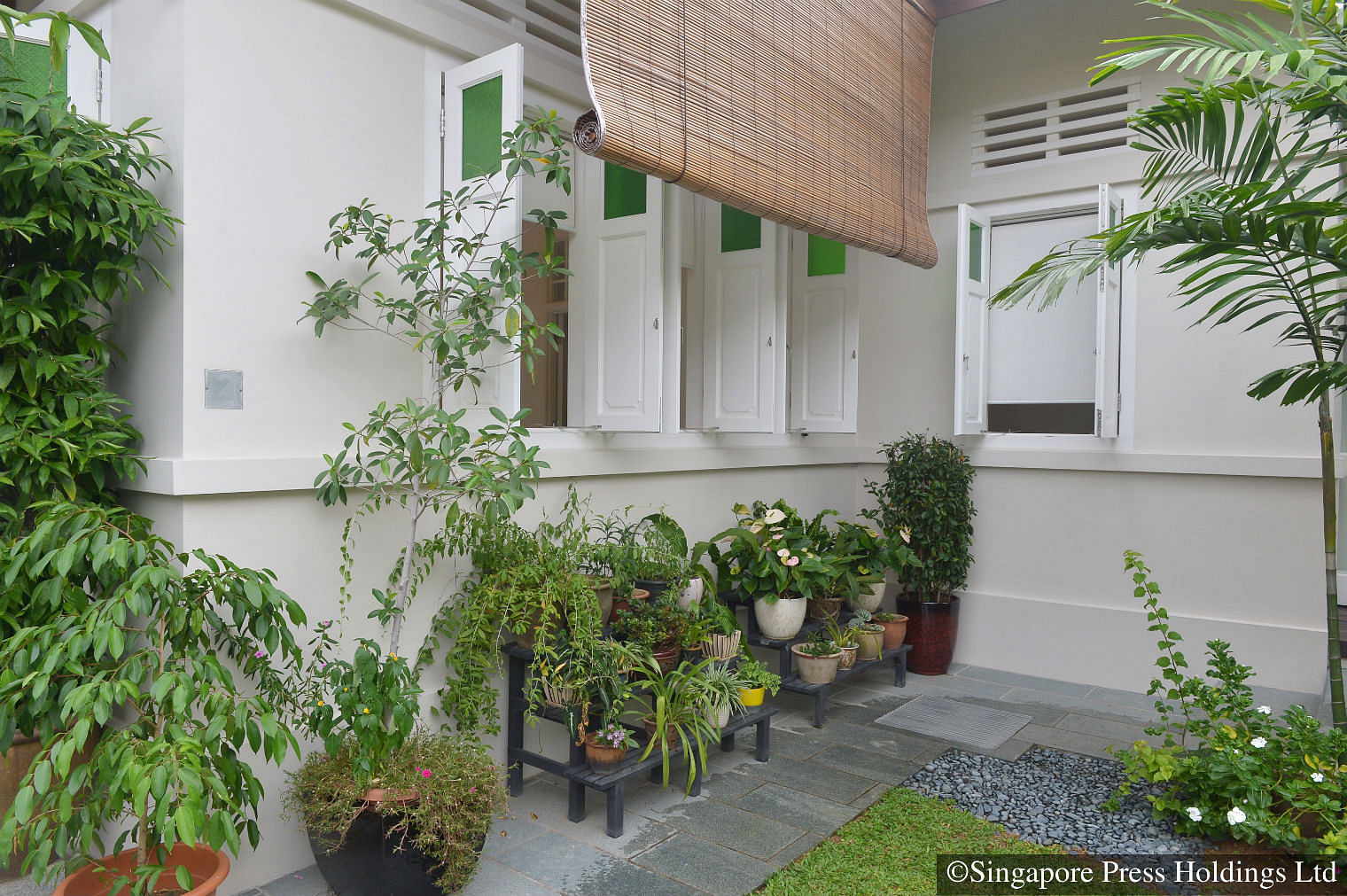
Pots of different types of plants at Ms Grace Ban's bungalow in the Mountbatten estate.
Indeed, if the walls could talk, the house would be brimming with tales because the land has passed through the hands of many notable names in Singapore’s early history since the late 1800s, when Mountbatten was still known by its former name, Grove Estate. Original title deeds, which date back to that era, list owners with surnames such as Crane, Bournemouth and Dunman, which are names of historic roads nearby.
Her late mother-in-law kept the deeds in mint condition after receiving them when her family bought the house in 1940. Ms Ban’s late husband bought the house from his brother. Their mother had given it to both her sons. She also had two daughters.
Ms Ban was convinced by her architects, Liu & Wo Architects, to refurbish rather than tear down the old beauty. She explains the need for a renovation, saying: “It wasn’t a dilapidated house, but the roof was leaky and fixtures needed to be changed. It was just time to do the house up.”
It was a two-year-long labour of love and Ms Ban moved back into the house last September. She says: “I had many debates and sparring sessions with the architects and contractors about what to keep. They ended up being great partners in the project because they understood what I wanted out of the house.”
The exterior feels like a throwback to yesteryear, when houses here had European architectural influences, but with features to adapt to the tropics.
Ms Ban stripped the walls of their old plaster and redid them. She also replaced woodwork and windows with new pieces in the original design. Old window bars were removed to make the interior feel less caged in.
The original part of the house had three bedrooms. Walls of one of the bedrooms were removed to expand the living room into a longer space. The other two were converted into a guest bedroom.
A new area was also carved out at the back of the house. A wet and a dry kitchen, and a master bedroom now occupy the back of the house on the first floor, while a second level was added to the single-storey house above the kitchen and dining area. This new wing is occupied by her two sons, aged 22 and 24.
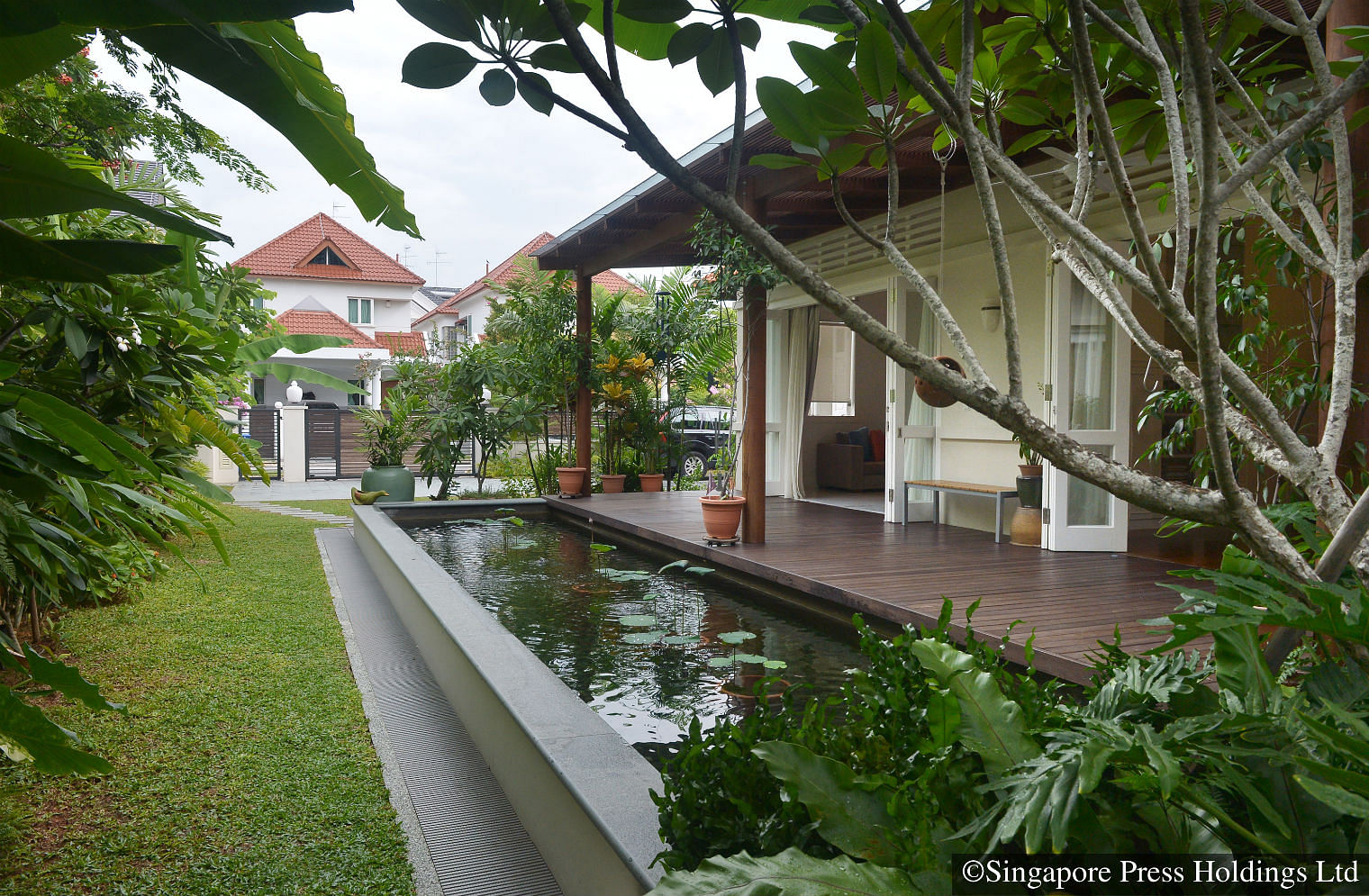
A lotus pond by the side of Ms Grace Ban's bungalow in the Mountbatten estate.
A green outdoor space was a must-have for Ms Ban. A lotus pond, set next to a wooden deck, creates a serene oasis at the side of the house. Doors to the living room and the study open up to the pond, and a cool breeze flows through the house on windy days.
There were many happy surprises along the way.
For example, when the plaster boards in the spacious entrance hall were removed from the ceiling, Ms Ban discovered how tall the ceiling really was. Taking advantage of the more-than-3m height, she put in a chandelier for a grand feel to the entrance.

Interior of Ms Grace Ban's bungalow in the Mountbatten estate. The house's high ceiling in the new wing is a perfect backdrop for a chandelier.
But it was not all smooth-sailing. She discovered the solid concrete floor did not have a metal mesh inside. Contractors had to hack the floor to fit it in to make the floor studier.
Ms Ban says: “It was expensive to retain the house because there are a lot of things to preserve. Along the way, you discover things such as a whole floor needs to be redone. There’s a lot of unforeseen costs.”
The entire project came up to $1.5 million to renovate and furnish.
Additions and renovations aside, the house also brought a new beginning for Ms Ban. During the renovation process, she met Mr David Khoo, 57, a director and interior designer at Design Ideas International, an architecture and planning firm, at a charity dinner last year.
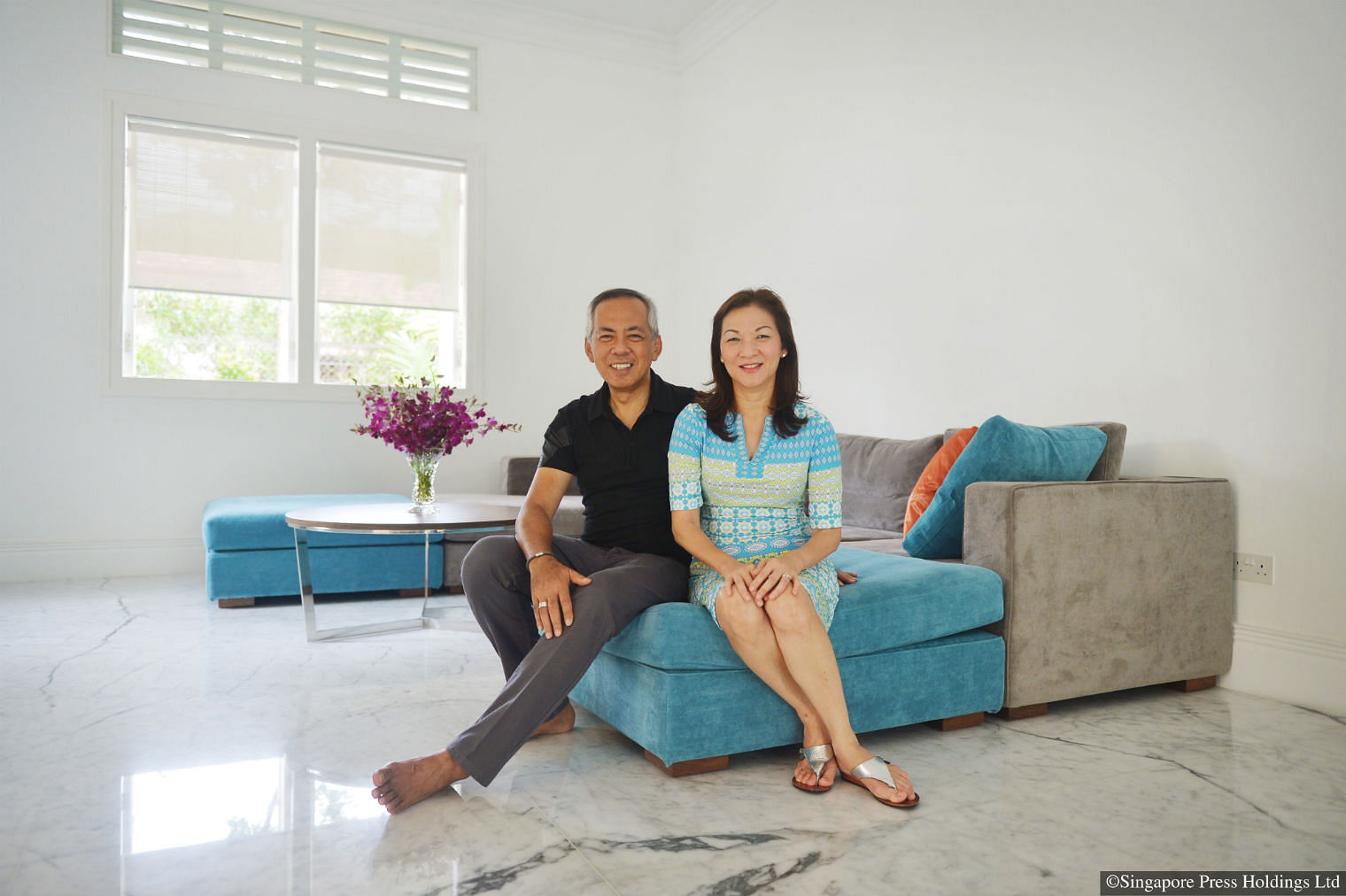
Ms Grace Ban, managing director of Estee Lauder Cosmetics, and her husband David Khoo.
After finding out his occupation, she shared with him that she was renovating her house. She showed him a picture of a long, marble table she had seen in the Singapore Airlines Business Class lounge at Changi Airport as she liked the look of it, and wanted his opinion on whether something similar would work in her house. By coincidence, he had designed these very lounges.
The two hit it off – he was a widower – and they started dating. Earlier this year, they had their wedding solemnisation in Ms Ban’s renovated house.
Mr Khoo moved in with Ms Ban while his two children, aged 21 and 23, remained in their family home. The newly extended family get together every weekend for lunches and dinners.
Ms Ban says: “I didn’t even know I was going to get married when I started planning this house. So, there’s a part of the house which was designed before and after David came about.”
He helped her look over the plans and pick out furnishings, such as the lights and the Italian marble flooring which she fell in love with at first sight.
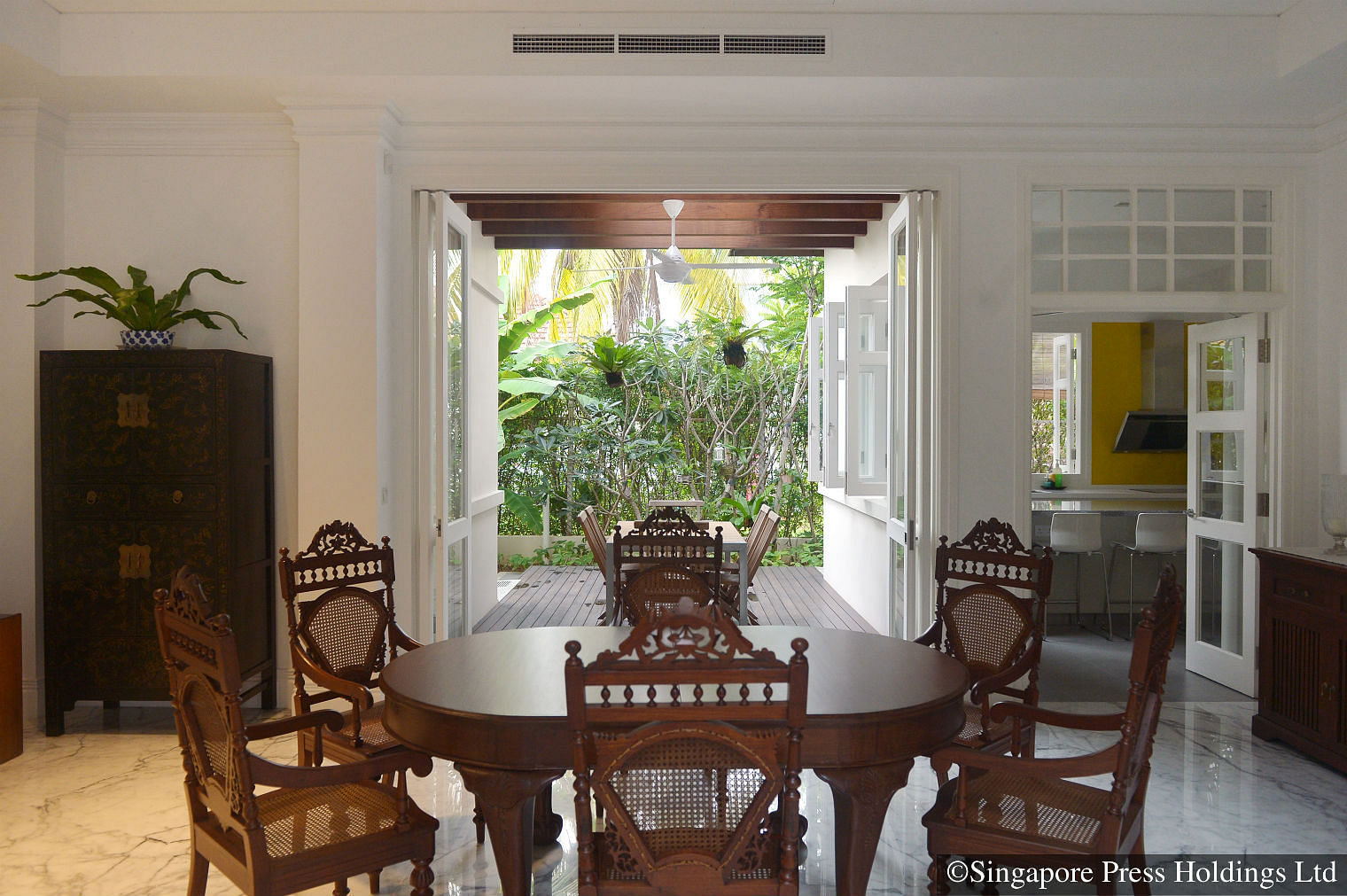
The dining room of Ms Grace Ban's bungalow in the Mountbatten estate. It is furnished with furniture that Ms Ban got from a friend.
The home is done up simply. For example, the couple do not have a bed frame, opting to sleep on a thick mattress on the floor instead. Ms Ban explains: “We still have not found a bed frame we like… something that has personality. Right now, we like this arrangement so much, we might not even get one.”
While renovating the house, she rented a house nearby so she could check on the renovations whenever she wanted to. It made the project even more personal as she watched the house change every step of the way. She made friends with the construction workers who worked on the house and sometimes cooked lunches for them. “When you see something grow from rubble to a full house, it really is a journey. It’s such a nice feeling and creation, and there’s great satisfaction when it’s completed.”
Now that the hard work is over, Ms Ban can finally kick back and enjoy the space.
“I’m happy I did it this way. I have my dream home now, but it’s not one of those coffee-table book homes. We’re down-to-earth people and the home has to be practical, not just with nice finishes. At the end of it, we just want to enjoy our house.”
Written by Natasha Ann Zachariah for The Straits Times. Photos: The Straits Times. This article was first published in 2014.


